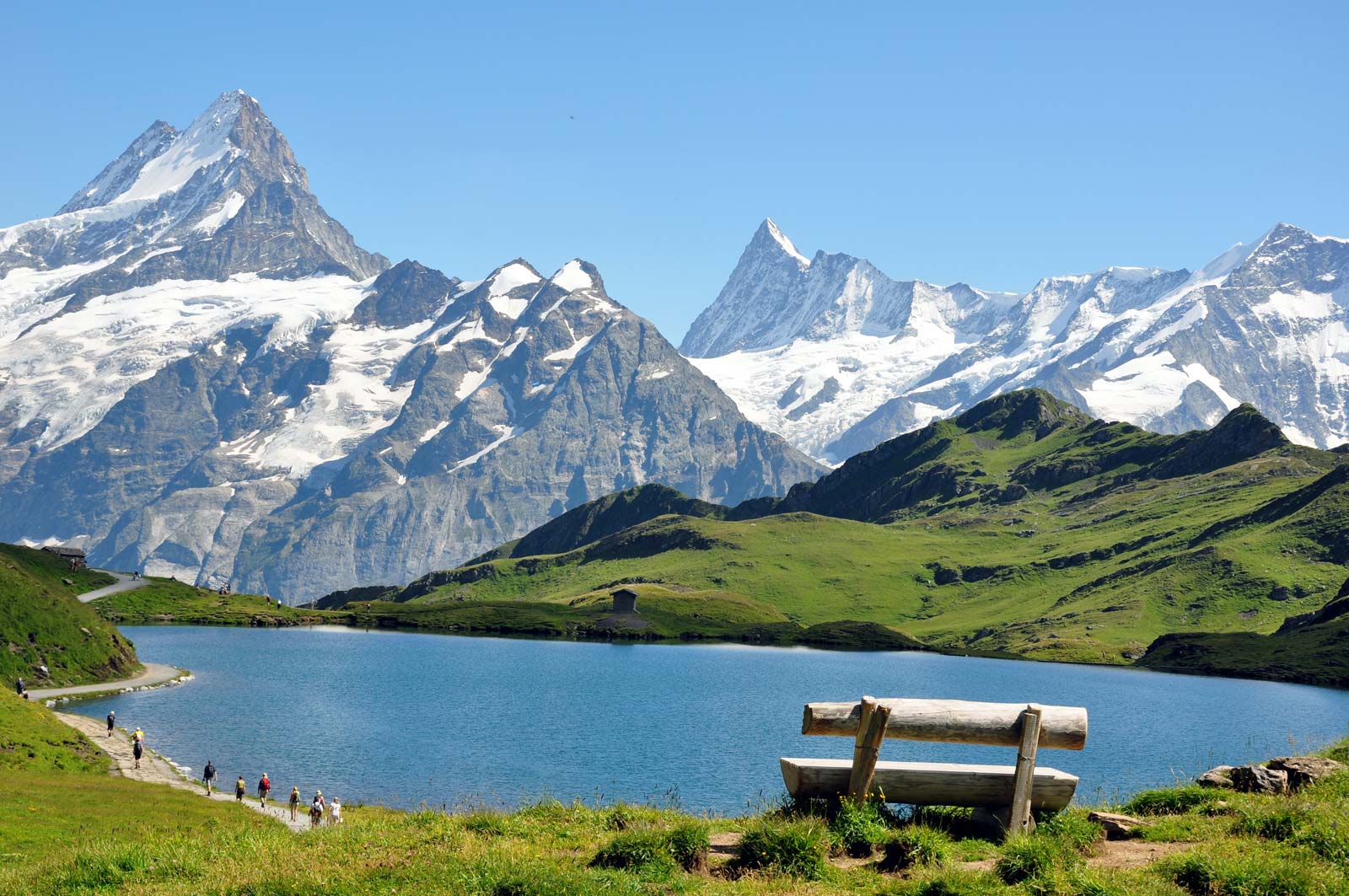It’s the highest and most extensive mountain range entirely situated within Europe and it’s home to the highest and most famous mountain in the Western part of the continent. In this article, you’ll be able to discover some of the most interesting facts about the Alps, a mountain range located in one of the most fascinating regions in the world!
The range features 128 peaks over 4,000 meters
The highest mountain in Europe stands 5,642 meters tall and is located in the Caucasus Mountains. This prominent mountain is Mount Elbrus and is quite a bit taller than the highest mountain in Western Europe called the Mont Blanc which stands 4,808.73 meters tall.
The Mont Blanc is a famous mountain in France and just one of the 128 peaks of the Alps that reach a height of 4,000 meters or more, referred to as 4,000ers by the International Climbing and Mountaineering Federation (UIAA). Remarkably, this organization only lists 82 mountains above this height that have a prominence of 30 meters or more.

The formation of the Alps started around 300 million years ago
The development of the Alps as they appear today is a process that started well over 300 million years ago in a period called the Paleozoic Era. Back then, there was only the Pangaean supercontinent which consisted of a single tectonic plate.
This plate eventually broke into multiple separate pieces during the Mesozoic Era, a process that created the African and the Eurasian plates. The Alps were formed by the collision of these two plates which resulted in the uplifting of sedimentary rocks from the bottom of the ocean. This eventually created the peaks of the Alps that we see today.

The sources of many important European rivers can be found here
The Alps are an incredibly important mountain range for Europe as it provides the lowlands of the continent with drinking water, irrigation, and electricity produced by hydroelectric power. Some of the biggest rivers in Europe originate in the Alps, including the Rhine, the Rhône, the Inn, and the Po. These rivers often flow through neighboring countries to eventually release into the Mediterranean Sea, the North Sea, Adriatic Sea, and even the Black Sea.

Over 13,000 plant species grow here
The type of vegetation in the mountain range varies greatly based on location and elevation. The main deciduous trees growing here are oak, beech, ash, and sycamore maple. As you go higher, the vegetation changes quite a bit and often consists of short pine trees initially followed by amazingly colorful meadows of Alpine flowers. Some of the most famous Alpine plants are the Edelweiss and the Alpine gentian. Well over 13,000 different types of plants have been identified in the Alps.

It’s by far the largest mountain range entirely located in Europe
The Alps take on a crescent shape and have a total length of about 1,200 kilometers and a width of about 250 kilometers. They cover about 200,000 square kilometers, which makes it the most extensive mountain range situated entirely within Europe. The Ural Mountains in Russia and the Caucasus Mountains in Russia, Georgia, and Azerbaijan, are larger but are partially situated within the borders of Asia as well.

The Alpine lakes in northern Italy are popular tourist destinations
Some of the most famous lakes in the Alps are Lake Geneva, which is situated right on the border of France and Switzerland, and the Königssee in Germany. One of the most remarkable facts about the Alps is that the rivers originating here also create the subalpine lakes in northern Italy. These lakes have a completely different climate than the lakes located within the range and have been popular tourist destinations for millennia, dating back all the way to Roman times.

Its name could be derived from the Latin word for “white”
The name of the Alps is probably derived from the Latin word “Alpes,” which in return is probably derived from the adjective “albus” which means “white.” The name of the range has been described by its current name since at least the late 14th century.

